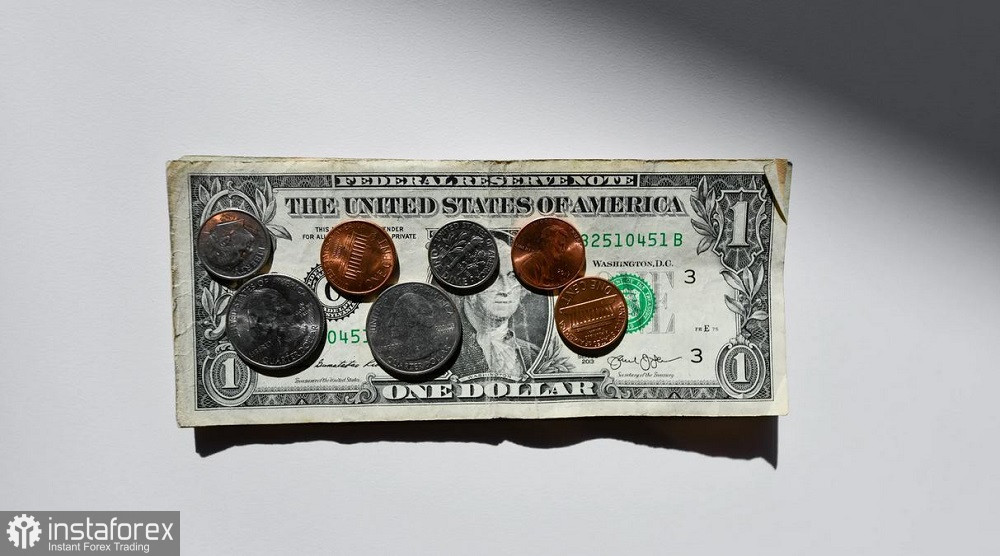The EUR/USD pair had a mixed reaction to Thursday's key reports. During Thursday's European session, Germany released its inflation data, and the core PCE index was published at the start of the US session. The German report ended up in the "red," while the US report met the forecast level. The pair fell in the first half of the day, and it edged up in the second half, but then it fell. However, the pair did not leave the boundaries of the defined price range. For the second consecutive week, traders continue to observe, so to speak, "the boundaries of decency," trading within the range of the 8th figure – just as they traded within the boundaries of the 7th price level for several weeks (from late January to mid-February).

Traders need a powerful impetus – unexpected, resonant, and preferably long-lasting. Thursday's releases, as we can see, did not live up to such expectations. Although, in my opinion, market participants underestimate the significance of German figures, which usually correlate with the overall European data. The eurozone inflation report will be published on Friday, but certain conclusions can already be drawn. And these conclusions, undoubtedly, are not in favor of the single currency.
Therefore, the pair's growth during the daytime, to say the least, is illogical, although there was undoubtedly a formal reason for such growth – the decline in the core PCE index in the United States. However, it is very risky to consider long positions under current conditions, as the pair, firstly, if it is rising, does so on unstable grounds, and secondly, it cannot even overcome the first intermediate resistance level at 1.0870 (the upper line of the Bollinger Bands indicator on the daily chart), not to mention conquer the 9th figure (to achieve this, it is necessary to overcome the next barrier – 1.0890, which corresponds to the lower boundary of the Kumo cloud on the same timeframe). Therefore, you should only consider long positions after the bulls settle above 1.0890-1.0900. You may consider shorts once the pair overcomes 1.0780 (the middle line of the Bollinger Bands on D1).
But let's return to the latest reports. Germany's annual inflation was at 2.5% in February, against expectations of a decline to 2.6%. This is the lowest level since June 2021 (+2.4%). The CPI has been decreasing for the second consecutive month after it suddenly accelerated (up to 3.7%) in December. The Harmonized Index of Consumer Prices (HICP), which the European Central Bank prefers to use for measuring inflation, came in at the forecast level, reaching 2.7%. This indicator is also decreasing for the second consecutive month – in December, it jumped to 3.8%, in January it decreased to 3.1%, and in February, as we can see, it decreased to 2.7%.
Take note that the government increased the national CO2 price at the start of the year, and this was supposed to affect the cost of fuel for transportation, heating oil, and natural gas. Despite this circumstance, cheaper energy prices in February turned out to be 2.4% lower than the February level of the previous year. The growth rates of food prices also significantly slowed down – this component of the report came in at 0.9%.
Another point to consider is that, according to the latest data from the German Institute for Economic Research (IFO), the majority of companies in Germany do not intend to raise prices for their products. This also speaks in favor of the idea that inflation in Germany will continue to decrease in the coming months.
All this indicates that the overall European inflation rate may also end up in the "red." This report will be published on March 1. According to forecasts, the Eurozone Consumer Price Index in February is expected to decrease to 2.5%. The CPI consistently accelerated in December and January, so if February's figures meets the forecast, the euro will come under pressure. Especially considering that the core CPI should also show a downward trend, dropping to 2.9%. This indicator has been continuously decreasing for six months – February should be the seventh in this series.
Thus, the euro may come under significant pressure on Friday if the European data falls into the "red" (which is quite likely, considering the dynamics of CPI in Germany).
On the other hand, the dollar calmly reacted to the decline in the core PCE index. The main Personal Consumption Expenditures (PCE) index decreased in January to 2.8% on an annual basis, as most analysts had predicted. This indicator has been decreasing for the sixth consecutive month, but this did not shift market expectations regarding the Federal Reserve's future course of actions. The market remains almost 100% confident that the Fed will keep the rate unchanged in March, 76% are confident that the Fed will maintain the rate in May, and 52% confident that it will cut the rate in June (according to the CME FedWatch Tool). Similar scenarios were in place even before the release of the core PCE index.
To put it briefly, one can conclude that at the end of the day, the dollar did not win, but the euro lost. In the current fundamental conditions, it is very risky to consider long positions (at least until the pair consolidates above 1.0890, the upper line of the Bollinger Bands on the daily chart). You may only consider shorts after the pair consolidates below the target of 1.0780 (the middle line of the Bollinger Bands on D1).
 English
English 
 Русский
Русский Bahasa Indonesia
Bahasa Indonesia Bahasa Malay
Bahasa Malay ไทย
ไทย Español
Español Deutsch
Deutsch Български
Български Français
Français Tiếng Việt
Tiếng Việt 中文
中文 বাংলা
বাংলা हिन्दी
हिन्दी Čeština
Čeština Українська
Українська Română
Română

